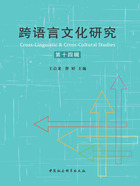
Narrating “Frog Stories” in Two Languages:How English-Japanese Bilingual Children Encode and Schematize Perspectives
Masahiko Minami[1]
Abstract:In the process of language development children are faced with a variety of interlocking challenges,which may become more complicated for bilingual children who need to learn more than one set of language-specific principles.The purpose of this study is to examine within- and across-language relationships between grammatical forms and semantic/communicative functions by focusing on complex grammatical measures,such as transitive and intransitive verbs,active and passive voices,durative and completive forms,as well as referential topic management.Forty English-Japanese bilingual children produced narratives in both languages,describing two scenes of agency and its resultant causal implications.Analyses of these bilingual children's narrative examples—examining how the narrator adopted a particular perspective to describe a particular scene—reveal strong associations between the perception/schematization of the scene and selected grammatical measures,indicating how language supports the narrator's cognition/schematization.Some relationships between grammatical forms have also been identified across the two languages,and we may consider the existence of such cross-linguistic correlations in the light of cognitive development in bilingual children;that is,bilinguals schematize a given scene in similar or even identical ways,choose an appropriate verb,and encode agency accordingly.Cross-linguistic comparisons,at the same time,indicate a language-specific tendency to use continuative/completive,and,educationally more important,to use sporadically or even omit encoding causality.These findings will lead to a discussion of issues particular to bilingual children in educational settings.
Key words:narrative;bilingual;schema/schematization;transitive verb/intransitive verb;active voice/passive voice;durative form/completive form